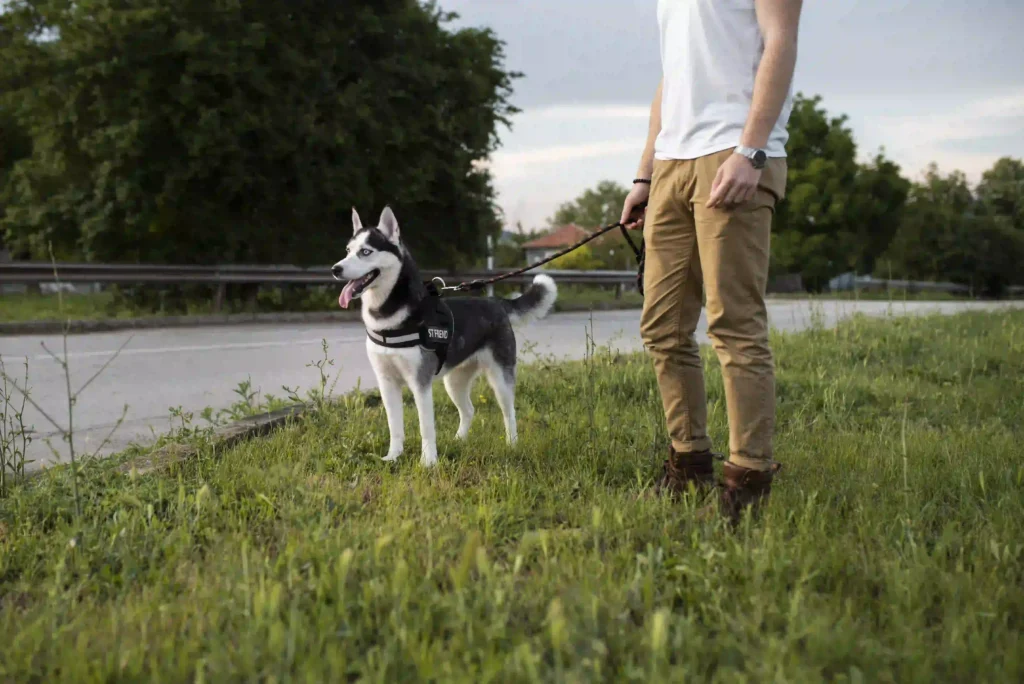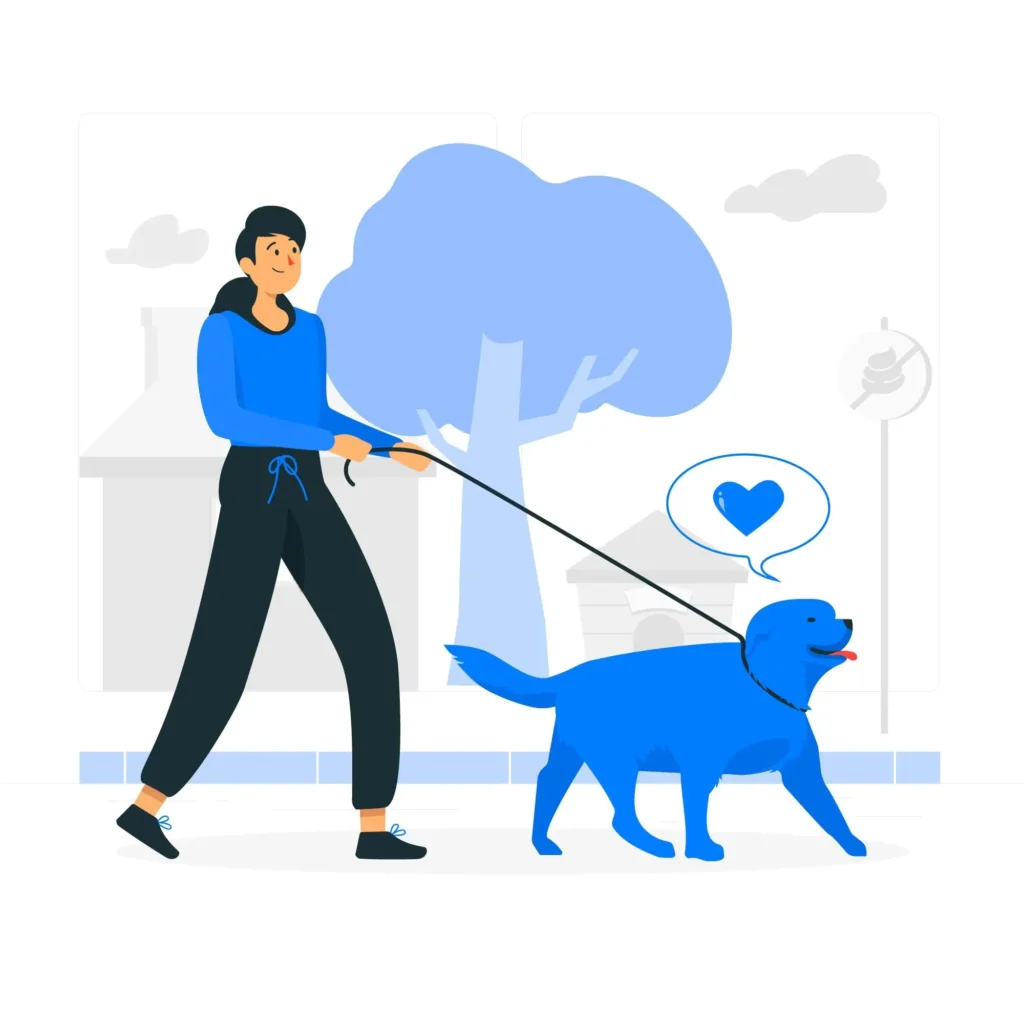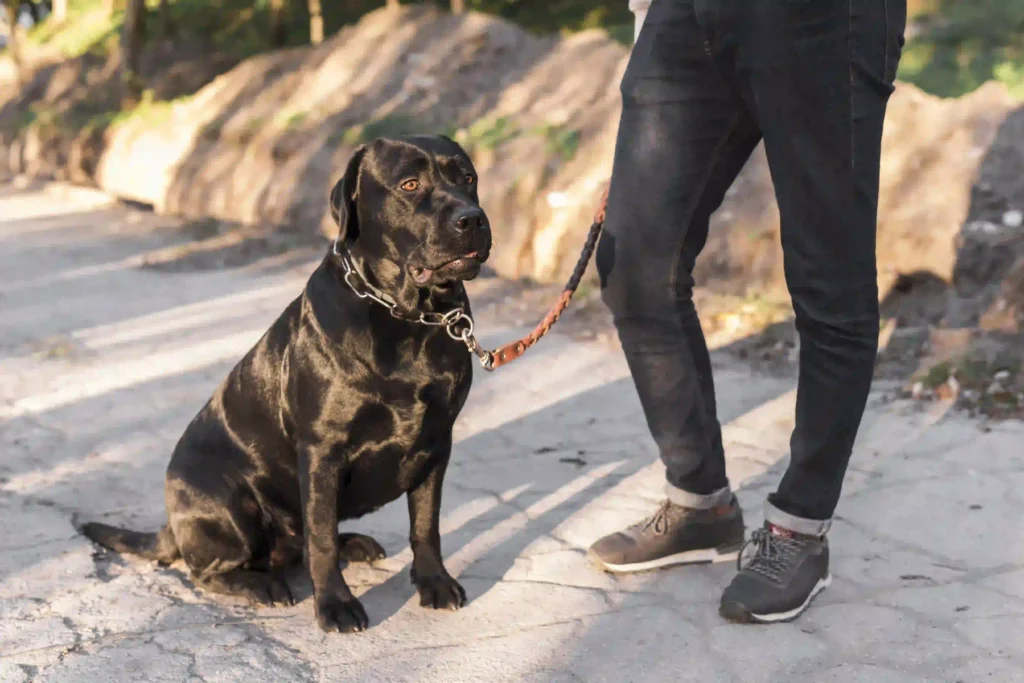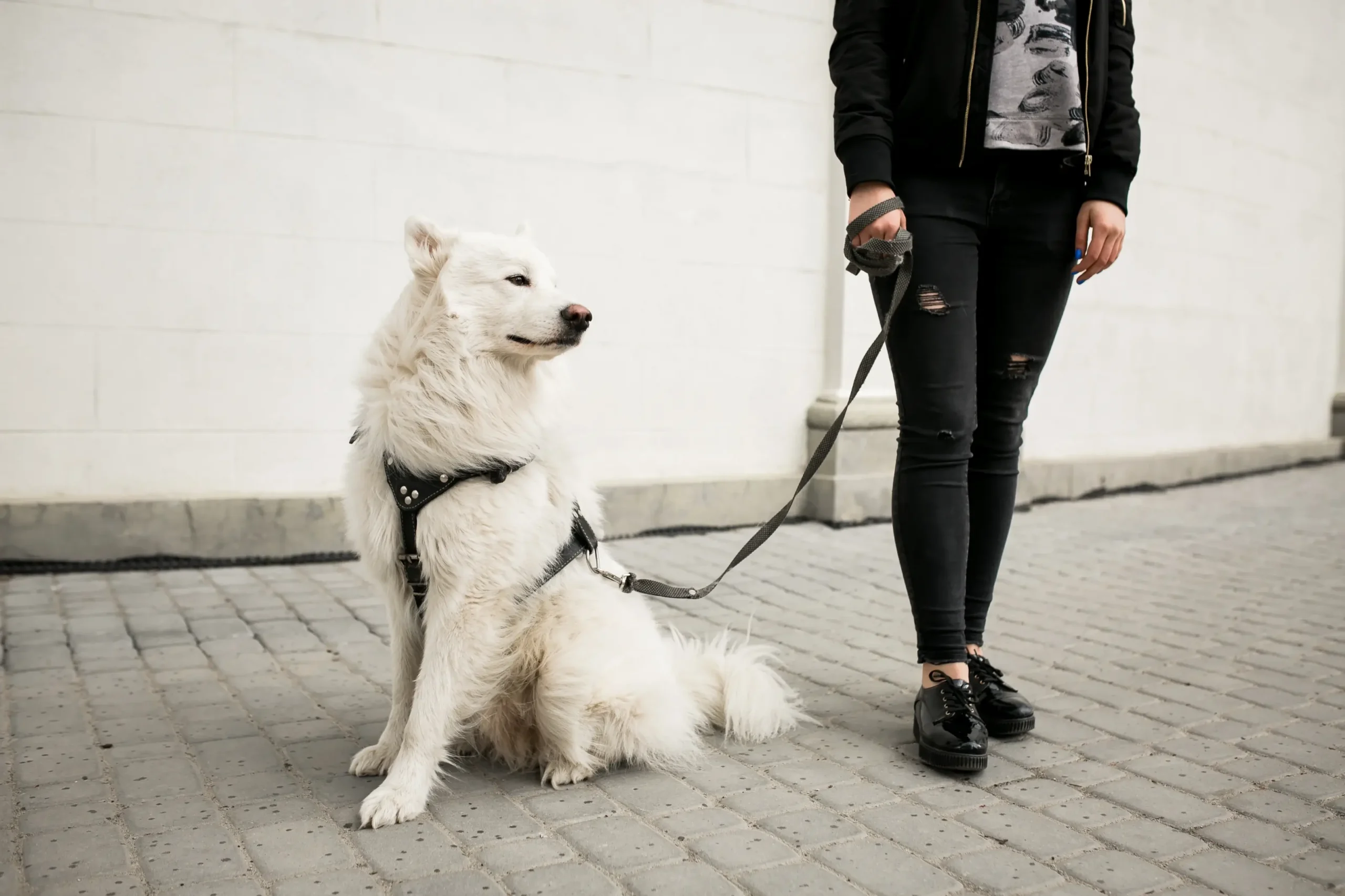Written by Deborah Foster, Certified Dog Trainer & Canine Behavior Specialist with 10+ years of experience in leash training, obedience, and behavior improvement. Reviewed by Erik Prins, ADAB, CCAB.
Leash training an adult dog comes with its challenges, but it is essential for safe and enjoyable walks.
Unlike puppies, adult dogs may have ingrained habits or past negative experiences with a leash.
With the right approach, patience, and positive reinforcement, you can successfully leash train your adult dog.
This guide will help you teach your dog leash manners, prevent pulling, and make walking a stress-free experience for both of you.

Why Leash Training an Adult Dog Is Important
Leash training isn’t just about convenience; it’s crucial for your dog’s safety and well-being.
Many areas have leash laws requiring dogs to be leashed in public spaces, and proper training prevents accidents like running into traffic or aggressive encounters with other animals.
Additionally, a well-trained dog is less likely to develop behavioral issues such as leash reactivity, excessive barking, or pulling.
Expert Tip:
“Consistency and patience are key when leash training an adult dog. Use positive reinforcement techniques like treats and praise to encourage good behavior.” – Michael Baugh, Puppy Training Expert

Step 1: Choose the Right Leash and Collar
The first step in leash training your adult dog is selecting the right equipment. The right tools can make training more effective and comfortable for your dog.
Recommended Gear:
- Standard Fixed-Length Leash – A 4–6-foot leash offers better control compared to retractable leashes.
- Front-Clip Harness – Helps reduce pulling and provides better steering control.
- Martingale Collar – A good option for dogs that tend to slip out of their collars.
Avoid choke chains or prong collars, as they can cause injury and stress.
Step 2: Get Your Dog Comfortable with the Leash
If your dog isn’t used to a leash, start by introducing it indoors.
Allow your dog to wear the leash around the house for short periods while offering treats and praise.
This helps them associate the leash with positive experiences.
Training Tips:
- Attach the leash while your dog is eating or playing.
- Let them drag the leash around under supervision.
- Reward calm behavior with treats.
Step 3: Teach Loose-Leash Walking Indoors
Before heading outside, practice loose-leash walking indoors where there are fewer distractions.
Hold the leash with slack and encourage your dog to walk beside you.
Loose-Leash Walking Technique:
- Hold a treat at your side and walk forward.
- If your dog walks beside you, reward them immediately.
- If they pull, stop walking and wait for them to return to your side before continuing.
Consistency is key—never let your dog pull you forward, as this reinforces bad habits.
Step 4: Practice in a Quiet Outdoor Area
Once your dog is comfortable walking indoors, move to a quiet outdoor space like your backyard or a low-traffic sidewalk.
How to Handle Distractions:
Gradually increase the level of distractions as they improve.
Use high-value treats like small pieces of chicken or cheese to keep your dog’s focus.
If your dog gets distracted, redirect their attention by changing direction or using a verbal cue like “let’s go.”
Step 5: Correct Pulling Behavior
Pulling on the leash is one of the most common issues with adult dogs. If your dog starts pulling, use the “stop-and-go” method:
- The moment your dog pulls, stop walking.
- Wait for them to loosen the tension on the leash.
- Reward them when they return to your side, then continue walking.
2025’s Easiest Way to Stop Leash Pulling
Another method is changing direction—if your dog pulls ahead, turn around and walk the other way. This teaches them that pulling won’t get them where they want to go.
Owner Review:
“I’ve used this method and I’ll vouch for its efficacy. It took two weeks with a stubborn dog but now he’s great on the lead and it only takes a little reminder when he decides he wants to test his limits.” – Peter Greene., Dog Owner

Step 6: Address Leash Reactivity
Leash reactivity occurs when a dog barks, lunges, or becomes aggressive while on a leash. This is often due to fear, frustration, or lack of proper socialization.
How to Reduce Leash Reactivity:
- Keep a safe distance from triggers (other dogs, people, cars) and reward calm behavior.
- Use a cue word like “look” to encourage eye contact and prevent fixating on distractions.
- If your dog reacts, stay calm and redirect their focus with treats or a toy.
For severe reactivity, consider working with a professional dog trainer.
Step 7: Build Consistency and Increase Walk Duration
Once your dog walks politely on a leash in low-distraction areas, gradually introduce more challenging environments like parks or busy streets.
Leash Training 101: The Trainer-Approved Way to Walk Your Dog Without Stress
Training Progression:
- Start with 5–10-minute walks and gradually increase the duration.
- Introduce new environments one at a time.
- Continue using rewards and reinforcement to encourage good behavior.
Common Leash Training Mistakes to Avoid
- Using Harsh Corrections – Yanking on the leash or using punishment can create fear and worsen behavior.
- Inconsistent Rules – Allowing pulling sometimes but not others confuse your dog.
- Skipping Indoor Training – Starting outside too soon can overwhelm your dog.
- Not Using the Right Rewards – Low-value treats may not be motivating enough, especially in distracting environments.
Ending Notes
Leash training an adult dog may require time, patience, and consistent practice, but it is completely achievable with the right approach.
By using positive reinforcement, maintaining a calm demeanor, and gradually introducing your dog to the process, you’ll soon enjoy peaceful, enjoyable walks together.
Remember, every dog learns at their own pace, so don’t rush the process.
As you reinforce good habits and ensure a strong bond, your dog will grow to associate walks with fun, excitement, and companionship.
Whether you’re working with a three-year-old or five-year-old dog, the effort you invest now will result in a lifetime of happy, safe, and well-behaved walks. Happy training!
If you’re struggling with leash training, consider seeking help from a professional trainer to address specific challenges.
For more expert dog training tips, explore our blog for in-depth guides.

